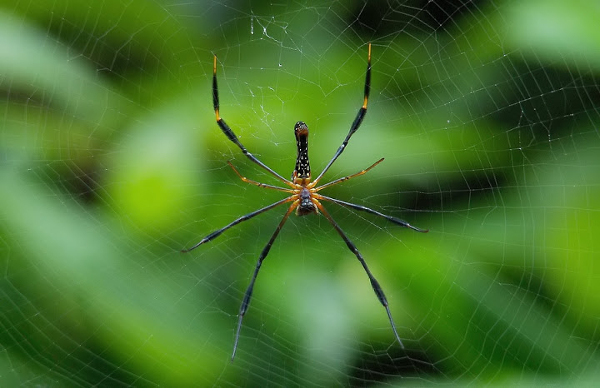Scientists from the Zoological Survey of India (ZSI) have managed to barcode at least 100 species of spiders based on their DNA, in the largest exercise of its kind in the country.
The study includes species such as the spitting spiders (Scytodes thoracica), spiders with ‘natural’ mirrors in their abdomen (Thwaitesia sp) and those that steal others’ food (Argyrodes flavescens) – a phenomenon which scientists term as kleptoparasitism. Then there are species which are found only in India.
“This is the largest attempt on DNA barcoding of spiders from India. At least 101 species, with at least five endemic species, have been DNA barcoded. Work on DNA barcoding of at least 100 other Indian spiders is in progress,” the director of ZSI and a co-author of the research paper, Kailash Chandra, said.
The findings of the ongoing exercise have been published in Nature Publishing Group (NPG) journal, Scientific Reports – one of the leading multidisciplinary science journals in the world – in its October 1 issue.
Experts said that while most of the spiders are not dangerous, a few species can produce fatal skin allergies to humans. Many of these spiders are believed to be beneficial for us as they keep the population of several insects like mosquitoes under control.
DNA barcoding is a method for the quick identification of any species based on extracting a DNA sequence from a tiny tissue sample of any organism. In simple terms, it is the molecular signature of a species based on its genes.
“These are just like barcodes we find on products in shopping malls, which, when scanned, help us to know about the product, its price, expiry date and date of manufacture,” said Vikas Kumar, a ZSI scientist associated with the exercise.
“The DNA barcoding of spiders would help in easy identification of these creatures and help to know more about these animals and their evolution,” Kumar said.
Other authors of the publication are Kaomud Tyagi, Shantanu Kundu, John Caleb, Avas Pakrashi, and Priya Prasad.
“All the ‘voucher’ specimens of these barcoded species are available in the National Zoological Collections at ZSI in Kolkata for future research work,” said Kaomud Tyagi, another scientist in the team.
Dhruv Prajapati, an Ahmedabad-based arachnologist, said it was “indeed a significant research paper. “The availability of this data in public domain Barcode of Life Data System (BOLD) will help the researchers from across the world for future research,” Prajapati said.
Scientists had earlier published barcodes of around 17 species of spiders from the Western Ghats.
In May this year, Pakistani scientists had barcoded around 200 spider species.
“Both are pioneering works in the region. As many spider species are common for both India and Pakistan, these research works could provide a common platform for the scientists of the two neighbouring countries once they are uploaded on BOLD. They can be accessed by scientists across the world,” Sanjay Kesari Das, a Delhi based arachnologist who recently discovered a new species of a trap-door spider, said.
ZSI scientists said that there are around 1800 species of spiders in India, which is just around 4% of the arachnids found across the world.
Source: HT
Image Courtesy: Sahyadrica
You may also like
-
New Heat-Based Approach To Cancer Treatment Can Reduce Chemotherapy Doses
-
Scientists Take A Major Step Towards Unification Of Classical & Quantum Gravity
-
India Graphene Engineering and Innovation Centre (IGEIC) Under the Vision of Viksit Bharat@2047 Launched
-
New High-Performance Gas Sensor can Monitor Low Level Nitrogen Oxides Pollution
-
Antidepressant Drug can be Repurposed for Treating Breast Cancer
